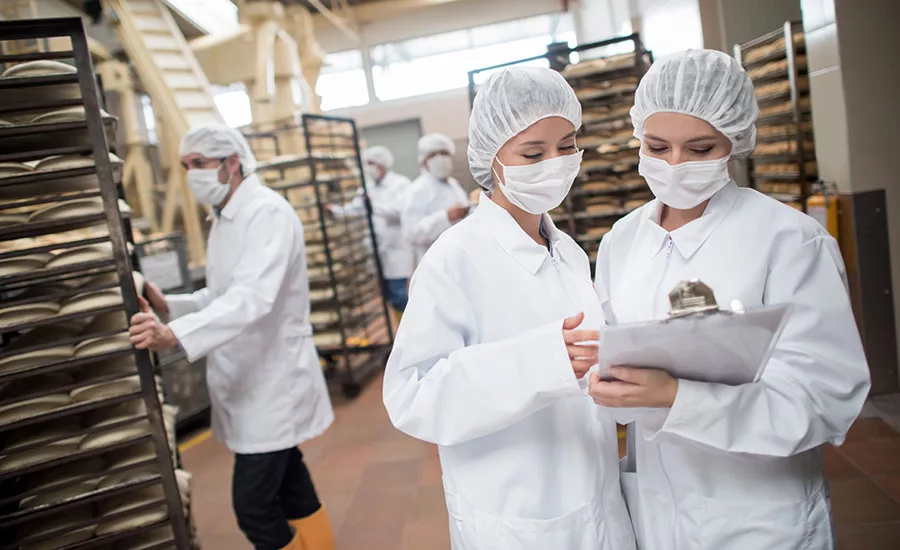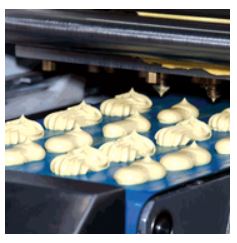Is Zero Foreign Material Possible in Food Processing?

The answer to the question in our headline is “yes.” And it takes a proactive and a multifaceted approach to get there.
It might go without saying that foreign material control is imperative in food processing. Consumers trust the industry to deliver safe food that delights their family. Incidents of foreign materials in finished products can cause significant harm to consumers and brand loyalty, and ultimately have a long-reaching impact on company reputation. But these risks can be overcome with a three-pronged approach to foreign material control: creating the right culture, setting high expectations and robust programs, and developing strong detection capabilities within the manufacturing facility.

Creating the Right Culture
First, the organization must develop a “zero-defect mindset” culture that includes all levels of the organization. Leaders must help model the right behaviors and empower all employees with the knowledge and capability to take action when they see a problem: for instance, taking accountability and corrective actions when seeing defects on the production floor or parts lying on equipment, and being empowered to address equipment defects. An important element to this type of engagement is helping employees understand why these instances can lead to issues and not assume everyone understands the reasoning. Engagement, education, and empowerment are essential. This is where it starts and ends.
Setting High Expectations and Robust Programs
The next prong is ensuring the organization has the programs that clearly lay out expectations both internally (within your manufacturing facilities) and externally (with suppliers and comanufacturers) across the supply chain. An effective foreign material prevention program starts with evaluating which contaminants are likely to occur. Many substances can be classified as foreign materials. The ones that most companies think of when designing programs are typically processing components, such as parts of equipment and metal shavings, plastic, and glass. There are also natural substances, such as bone, wood, and rocks.
The program requirements must include documentation protocols, along with employee awareness, training, and qualifications that demonstrate understanding of the programs put in place. There must also be steps to verify that the hazard controls are working properly and assign accountability based on the outlined requirements and corrective and preventive actions if there was a failure.
Developing Strong Detection Capabilities
The last element in the “journey to zero defects” is looking at and designing the right detection capabilities based on the program requirements to aid in controlling foreign materials. There are many detection methods and systems that control foreign materials in food processing, ranging from simple to complex. However, most processing facilities use one of the five primary detection methods or a combination, depending on the location within the facility. They are X-ray, metal detection, optical sorting, magnets, and separation systems (e.g., sieves and screens).
- X-rays are common and well-known because they detect many foreign bodies in food, including bones, dense plastic, glass, and composites, among many others. They work efficiently and are easy to operate.
- Metal detection systems vary, and each of them has a function in food manufacturing. For example, there are ferrous-in-foil systems, which identify ferrous objects in containers made of foil.
- Optical sorting is a method that uses lasers and cameras to identify foreign materials by color, shape, or size.
- Magnets are a simple technology that are easy to install, and they are less costly than other detection methods. They are effective in facilities that have a high risk of ferrous and nonferrous metal contaminants.
- Lastly, separating systems, such as sieves and screens, are another simple foreign material detection method and the most cost-effective. They identify incorrectly sized materials in food products and separate out those contaminants. Sieves and screens are the most commonly used separating systems and are most effective in the unloading and incoming-materials areas.
All these methods can help detect foreign materials in processing. If leveraged correctly within a supply chain, they make a big impact on an organization’s journey to zero foreign material.
Looking for quick answers on food safety topics?
Try Ask FSM, our new smart AI search tool.
Ask FSM →
These three areas—culture, programs, and detection—are the keys to eliminating contaminants. So, is it worth investigating why companies have supply chain interruptions due to foreign material?
Challenges in Foreign Material Control
There are many challenges that come with controlling foreign materials in food processing. There are variabilities in products, processes, and materials. This does not make it easy to detect or identify foreign materials consistently within a manufacturing line. There are many viable options available to eliminate foreign material from processing, but you must evaluate, verify, and validate assumptions with the potential detection method. This will help with choosing the right equipment to meet the identified scope or need.
No single solution is 100 percent foolproof. For instance, some materials are not detectable by current detection capabilities. When designing the optimal solution, you have to take a broad view to include looking at the anticipated risk, where it is located in the process, and the type of foreign material expected based on the process, materials, and food form. One thing to keep in mind is that there could be technology limitations and the inability to detect specific materials because of material type, size, shape, or orientation, to name a few. This can result in needing to use a combination of equipment and processes to reach an optimal solution for each specific instance.
The reasons to control foreign materials are many, not the least of which is the harm they can cause to consumers and customers. Such contaminants, if ingested, may lead to the laceration of the throat or mouth or cause dental damage. They may also perforate the intestines or cause other serious injuries.
Control of foreign materials in food is also important because contamination may lead to efficiency losses for manufacturers through wasted products, recalls, and the loss of a company’s reputation.
Challenges in Foreign Material Control
Effective Programs That Control Physical Hazards within the Supply Chain- Training: Engaging teams with the knowledge that includes a step-by-step process of the physical hazard control program and defined skills, competencies, and knowledge to manage the program
- Qualification: Demonstrated understanding (skills, knowledge, and competencies) of the program
- Verification: Ensuring hazard controls are working properly; clearly documenting what is required and frequency for verification (examples of verification could include testing, demonstrating, or reviewing of documents)
- Accountability: Clearly defining who is responsible for oversight and verification of the program and empowering employees at every level to take corrective and preventive actions
Getting to Zero
The journey starts with the culture. The work has to be planned and aligned throughout the organization, which speaks to the first prong: establishing zero tolerance. It starts and ends with the people within the organization. All behaviors are learned. What is leadership saying about foreign materials within the processing facility? What is leadership not saying? What are leadership actions telling the organization when risks that can impact the food stream are ignored? Employees must be empowered to manage, own, and verify the programs to control the identified physical hazards.
Along with culture come the programs, which are where specific requirements for controlling the physical hazard within the supply chain are identified. These include training, verification, qualification, and accountability (see “Effective Programs That Control Physical Hazards within the Supply Chain”).
Finally, the right detection method must be established. The decision is based on the identified hazard, process, material, and flow within a facility.
These three areas are proven to aid in the journey to zero.
At the end of the day, we have the trust of the public to protect. We are all consumers, and our friends and family are consumers too. The question, again, is, is zero foreign material possible? The answer remains “yes!” It has to be yes because the risk to consumer and company is not one we can take.
Sherry Williamson, M.B.A., is the vice president of global quality and food safety at the Kellogg Company.






